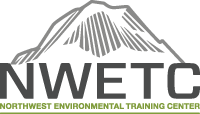**This is a download of 6 recorded two-hour webinar sessions. The download includes the full content of the live sessions and the course material bookets in .pdf format. (6 webinar sessions and 2 ebooks, 8 total files) **
Course material can be downloaded immediately after payment is made. Registrants will receive a certificate of completion and continuing education units (CEU's) via email approximately 14 days after purchase.
Part 1: Creating A Restoration Plan: (6 hours, 3 sessions) Habitat restoration/mitigation programs should address all aspects of a site’s ecosystem, rather than simply enhancing a particular species or group of species. With this in mind, the course material is designed to introduce a complete approach. Attendees will learn to assess site needs, and to create a plan that addresses them using the complete approach. However, since there are times when restoration/mitigation is needed to address specific species, such as special-status or game species which may require specific adaptations, attendees will also learn how to create a species specific restoration/mitigation plan.
In addition, attendees will learn the methods of determining debits for impacts and credits for mitigation. An outline for writing restoration/mitigation plans will be presented, which is as “bullet-proof” as possible in terms of providing sufficient information for gaining any necessary approvals and for implementing the plan.
Topics covered include determining goals; the background research needs necessary to determine the appropriate type and feasibility of restoration; restoration/mitigation planning processes (soil and hydrology, and planting plan considerations); regulatory and permit consideration; early considerations of unanticipated effects/adaptive management, bioengineering possibilities, best management practices (BMPs), buffers to minimize outside disturbances, climate change considerations, engineering considerations, cost estimations, and a method to determine success criteria.
Part 2: Implementing a Successful Restoration Plan: (6 hours, 3 sessions)
This webinar provides participants with an overview of the implementation of a successful habitat restoration/mitigation program, and expands to an examination of recommendations for necessary and innovative restoration techniques and monitoring.
Attendees will learn the short and long term management techniques of successfully implementing an approved habitat restoration/mitigation program plan. Attendees will also learn the importance of personnel management and involvement. Because everyone involved in implementing habitat restoration plans takes their cues from the project manager, those managers who take a personal interest in the project have a higher success rate of meeting performance standards.
Lectures will focus on the varying aspects of habitat restoration implementation, including but not limited to topics such as: logistics, start-up procedures, contract management, bioengineering, vegetation management; early considerations of unanticipated effects with adaptive management procedures, best management practices (BMPs), short- and long-term monitoring, and how to quantify success in terms of ecological structure and function.
Intended Audience:
Biologists, landscape architects, planners, and environmental engineers. The course will be designed for those with limited to moderate amounts of experience in natural area management, natural resource management, or in environmental permitting.
